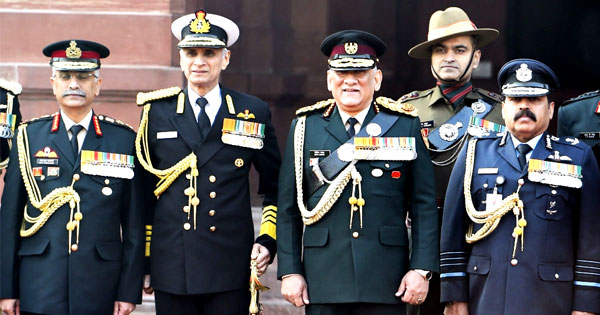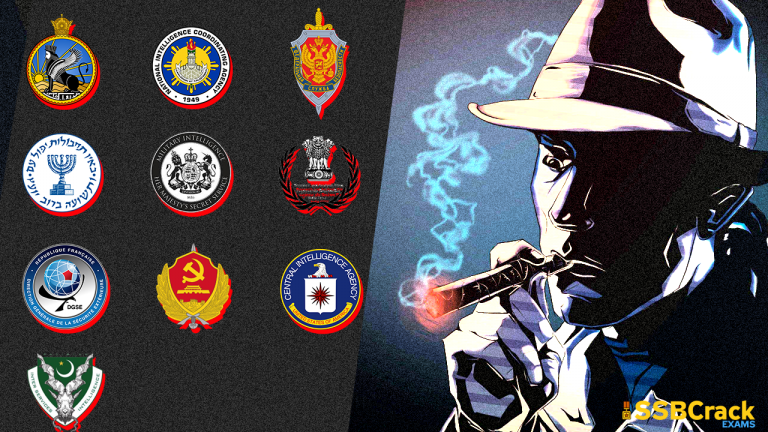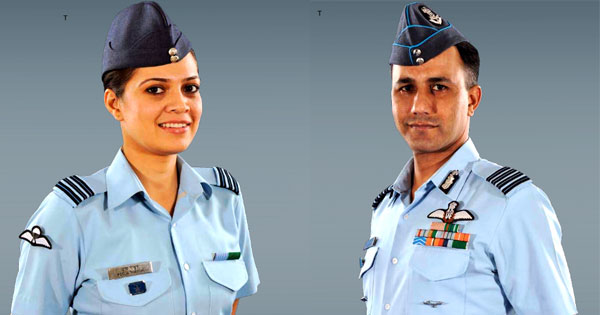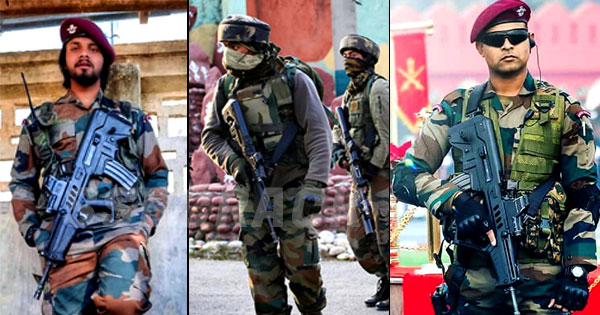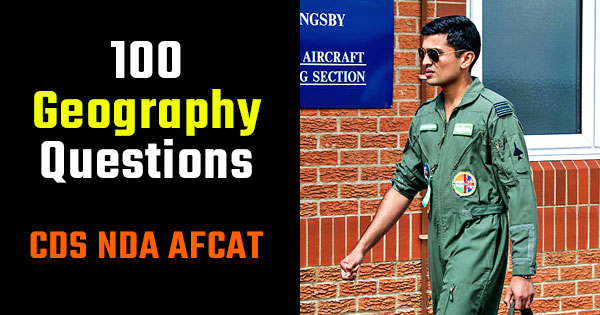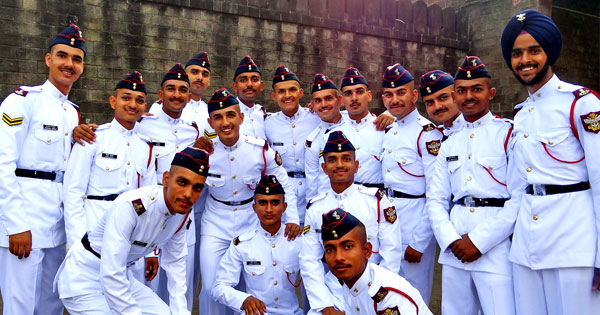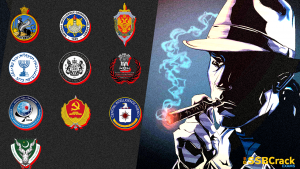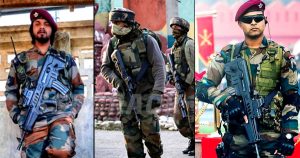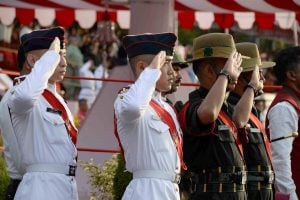Soon after assuming charge as Chief of the Defence Staff (CDS), General Bipin Rawat held a meeting with important functionaries of Headquarters Integrated Defence Staff (Hq IDS) on January 1, 2020. Wishing them all a Happy New Year, General Rawat directed various branch heads to come up with recommendations for inter-service synergy and jointness in a time bound manner. The CDS also directed that a proposal to create Air Defence Command be prepared by June 30, 2020. He also set out priorities for execution of synergy by June 30 and December, 31 2020. Some of the areas identified for jointness and synergy include creation of common logistics support pools in stations where two or more services have their presence.
Emphasising collegiate system of functioning, General Rawat directed that all three services and Coast Guard must be consulted and their views obtained in a time bound manner. Decisions will, however, be taken to ensure optimisation of resources. Efforts will be made to cut out infructuous ceremonial activities, which are manpower intensive. The CDS stressed that all must work towards accomplishing desired results and coming up with healthy views and ideas.
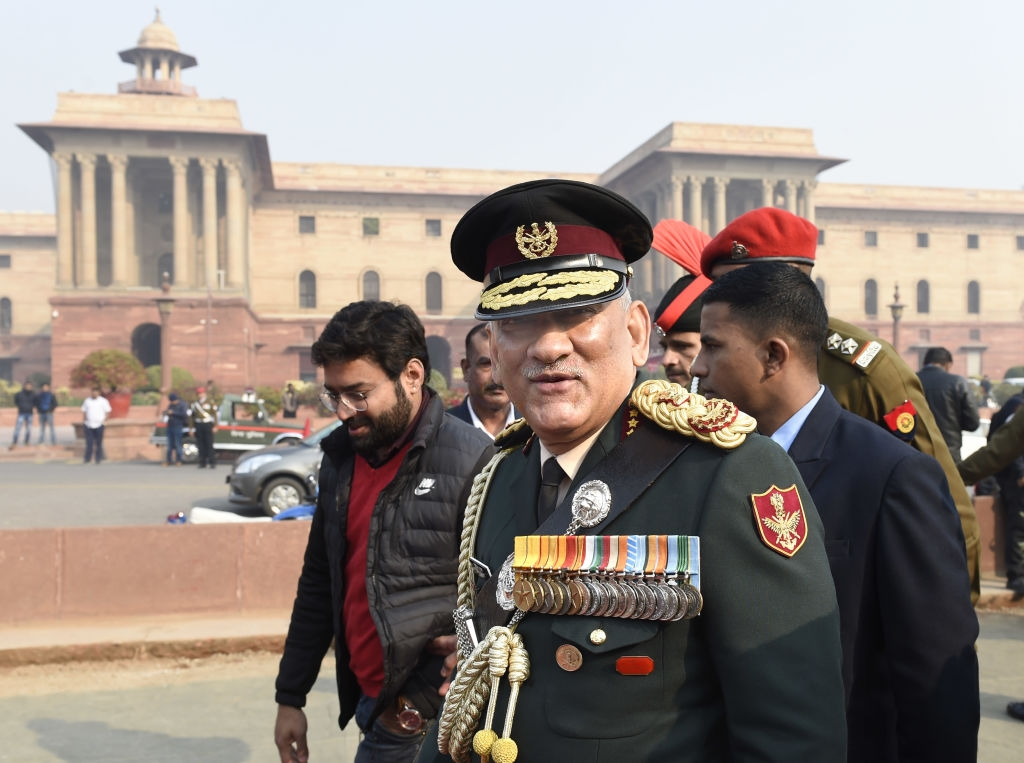
At the end of 20th century, India fought its fourth war with its neighbouring country Pakistan at Kargil, which revealed a lot of loopholes in the military structure of the Indian Armed forces. To investigate these shortcomings, the Kargil Review Committee was set up and it recommended for the post of Chief of Defence Staff (CDS) to synergize the functioning of 3 services. On 24th December 2019, the Cabinet Committee on Security approved the appointment of Chief of Defence Staff (CDS).
On 1st January 2020, General Bipin Rawat was appointed as the first Chief of Defence Staff (CDS) of the country. The Chief of Defence Staff (CDS) has the mandate to set up the first Joint Command comprising of the Army, the Navy and the Air Force, in addition to the two existing ones, for converging their functioning. CDS administers all the tri-service operations, including the newly made divisions of cyber, space and special forces.
Currently, there are 2 tri-service commands. First, is Andaman and Nicobar Command (ANC) located in Andaman and Nicobar Islands. The ANC is headed, in rotation, by officers from the 3 Services. It provides logistical and administrative support to naval ships which are sent on deployment to East Asia and the Pacific Ocean. It was created in 2001 to safeguard India’s strategic interests in Southeast Asia and the Strait of Malacca which is one of the busiest strait, by increasing rapid deployment of military assets in the region.
The other command is the SFC (Strategic Forces Command), which looks after the delivery and operational control of the country’s nuclear assets. It was created in 2003, but because it has no specific geographic responsibility and a designated role, it is not an integrated theatre command but an integrated functional command.
India under the new CDS is all set to create its new commands which will enhance its combat capability in the time to come. Now, let’s take a look into the Commands which will be formed in near future.
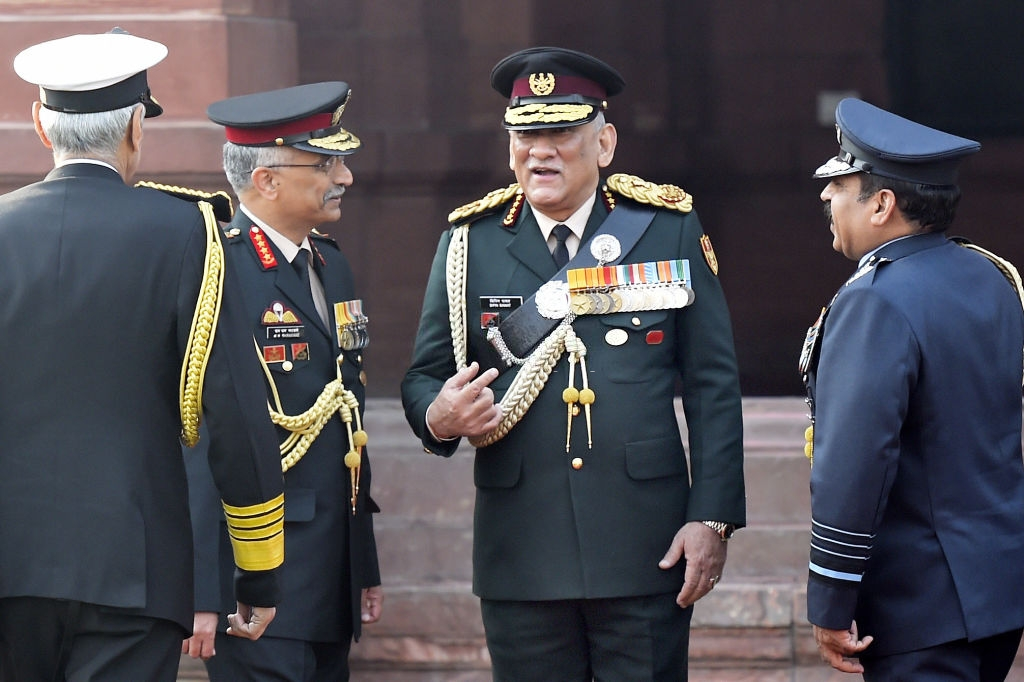
1 . Theatre command :
What is a Theatre command?
A theatre command is an organizational structure designed to control all military assets in a theatre of war to achieve the desired results. It is a unified command of the three services, under a single commander, for geographical theatre that is of a security concern.
- It places the resources of all forces at the command of a senior military commander for seamless efficacy.
- For example, a ‘theatre command’ in the East will integrate components of the IAF and the Army and will have component of the Navy integrated with it, too.
- At present, the only joint command is there in Andaman and Nicobar Islands which is the ANC.
Need of theatre command
- A Committee of Experts (CoE) led by Lt Gen (Retd) DB Shekatkar, in order to recommend measures to enhance the combat capability and rebalance the defence expenditure, has recommended for the creation of 3 integrated theatre commands – Northern Theatre Command for China border, Western Theatre Command for Pakistan border and Southern Theatre Command for the maritime role.
- None of the present 17 commands, which we have, are co-located at the same station, nor are their areas of operational responsibility contiguous.
- Lack of co-ordination among the 3 services during wars was visible during the Kargil war in 1999. The army’s operation was named Operation Vijay and the air forces’ operation was called Operation Safed Sagar. Though India emerged victorious in the war, the result of the war could have been better, if both the army and the air force had had more co-ordination.
- Modern military challenges cannot be tackled without a real integration up to the command level. A potential conflict with a major military power like China will, in all likelihood, be extended beyond the typical theatres into the domains of cyber, space, nuclear and covert capabilities. A more integrated response will be needed from the Indian armed forces.
- The eastern border of India with China is facing continuous threat from the Chinese PLA invasions . The Chinese are well equipped both militarily and in operational planning. The Chinese in early 2016 had reorganized 203 million PLA into 5 theatre commands, with the western theatre command handling the entire Line of Actual Control with India, from eastern Ladakh to Arunachal Pradesh.
New challenges such as the changing dynamics of national security, which now encompasses cyber, automation and others, cannot be solved by a disjointed general and complex procedures in MoD, but rather by a clear and robust structure, like that of the Theatre command, that should quickly respond to emergent situations.

2. CYBER Command
The absence of a Chief of Defence Staff (CDS) has hampered India’s cyber combat capabilities until now. However, with the recent creation of CDS, this domain has gained prominence and will be henceforth be headed by the CDS, who will lead the command. Currently, India is light years behind countries like China, Pakistan and others, who are carrying out state-sponsored cyber-attacks to ensure substantial damage to the enemy countries.
Need of Cyber Command
- India has been facing high number of cyber threats every year. Although Banking and Telecom are the most attacked sectors, but Manufacturing, Healthcare, and Retail are also facing a significant number of cyberattacks. Recently an attack on the Kudankulam Nuclear plant has taken place, which has exposed our weak cyber security system. It took one WhatsApp forward from Rawalpindi to strike unrest in Kashmir . Though the motives behind the different Cyber Attacks are different, but the threat to cyber space is a direct and serious threat to National Security.
- The emergence of internet had changed the way things were being done and this applies to the wars as well. The cyber domain has emerged as the 5th dimensional warfare where the war can be fought and won even without enemy’s knowledge.
- The Islamic State (terror group) has been gaining momentum in India. Most of the cases of radicalization had happened on the internet. Messages of jihadism are rampantly spread online.
- We have great ethical hackers and experts who can handle the situations, but we lacked the intent to do anything with that resource till now.
We need a special force that will be set up to combat cyber warfare as under the command of the CDS. India, under the aegis of the CDS, will be recruiting a group of cyber experts, who would be given the infrastructure and freedom to identify and tackle incidents of cyber terrorism. Protecting the cyberspace will ensure the protection of our military assets and information pertaining to National Security.
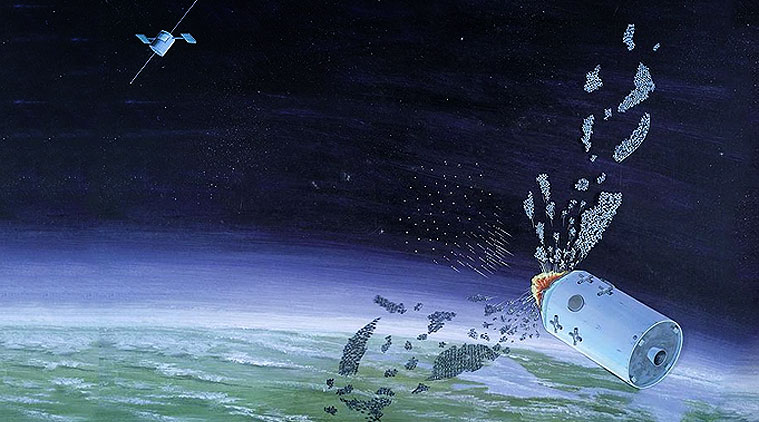
3. Space Command in India :
Space command is a unified combatant command of the defense, that coordinates the use of outer space by the armed forces. It aims to deter aggression and conflict, defend Space assets and deliver combat power to the forces through the space .
India must protect and secure two kinds of space assets—those that belong to us and those that are crucial to our economy and national security. Unlike western nations, whose space technologies for civilian use has been developed from military capabilities, India has developed its space technology first time for primary civilian use. Only in recent times, we have shifted to military use of space technology such as Long-Distance communication for soldiers in the field, cross border surveillance and more accurate use of firepower. So, there is an urgent need to protect the Space assets both for the military and civil uses.
Need of space command in India:
- Space technologies have dual use in their applications both in civil and military domains . Space warfare is considered as a 4th dimensional warfare.
- There is a direct threat to India’s Low earth orbit satellites . Such satellites could be destroyed using technologies like Kinetic kill vehicles or jamming technologies.
- The Borders of the country are the most difficult terrains that the country has. So, protecting them is of an utmost importance . With threat on both fronts, from Pakistan and China, we must ensure that the border guarding is done effectively using the satellites and other technologies.
- All major economies in the world, including China, Russia and the US are preparing for space warfare and India too need to be vigilant, considering the many adversaries it has. In 2018, Donald trump announced that US would establish a Space Force, the sixth fighting arm for their defence establishment. So, the threat posed to the space assets is real and should be treated with utmost priority.
- With global powers developing their space commands and ASAT missiles, India has no option other than being fully prepared for the “Star Wars”, in future.
For space defence to be effective, India must acquire a minimum, credible, offensive capacity across the various types of space weapons. The “minimum” is to ensure that we do not get overly drawn into an arms race, while ensuring that we have what it takes to deter attacks on our space assets. As India has demonstrated in the nuclear sphere, such a posture is wise, possible and effective. Credibility demands that both partners and adversaries are persuaded that we have the capacity, so occasional demonstrations are necessary. The ASAT missile demonstration is a positive step in this direction but more needs to be done in this area.
With a proxy war raging with Pakistan on India’s western front and frequent standoffs with China on the eastern border, the lack of a single chain of command is a threat to India’s defence power against adversaries. But now all the fragmented aspects of the Indian defence system are brought under one roof with the appointment of the CDS. The unified approach will enable the trident to work as one unit to protect the sovereignty of our great nation.

